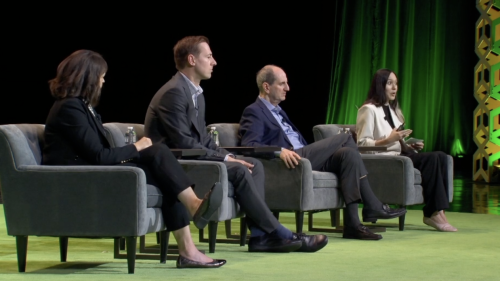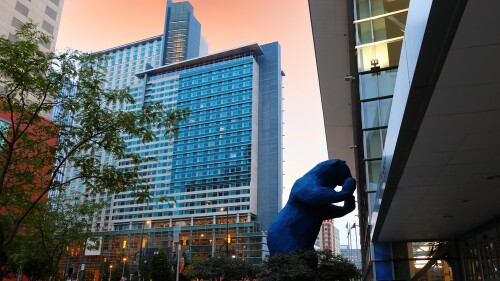Capital Markets and Finance
Hurricanes damage and disrupt communities, properties, and economies in various ways, whether direct, indirect, or both. Translating these impacts into credit risk and other financial implications can be complex. However, a range of tools and analyses enables lenders, investors, and developers to pre-emptively anticipate hurricane damage when a storm approaches, as well as to adjust long-term strategy to mitigate risks and seize opportunities over time.
Experts from Hines, JBG Smith, and Gensler anchored a McKinsey & Company panel, Reimagining mixed-use districts: strategies for new developments in an ever-changing world, at the 2024 ULI Fall Meeting last month. Panelists explored innovative ideas and case studies to illustrate how to make complex mixed-use projects work in today’s market.
After a quiet first half of 2024, CMBS originations increased 59 percent in Q3 on a year-over-year basis, according to the Mortgage Bankers Association’s Quarterly Survey.
Real estate economists’ outlook on the U.S. economy and real estate markets improved throughout the year as economic data remain strong and real estate values and performance seem to be nearing bottom. Survey responses indicate that a soft landing has become the consensus view. The Fall 2024 ULI Real Estate Economic Forecast, a semiannual survey of economists and analysts, marks a shift toward greater optimism for real estate performance in the near term, with recovery taking shape in 2025.
The outlook for the European real estate market is cautiously optimistic despite growing geopolitical uncertainty and concerns about economic growth, with London, Madrid, and Paris emerging as the standout performers, according to a new report by PwC and the Institute.
On Wednesday, during the ULI Fall Meeting’s final day at Resorts World Las Vegas, a panel of commercial real estate experts gathered onstage in the Resorts World Theater to forecast the industry’s trajectory through 2026.
Released during the Institute’s 2024 Fall Meeting in Las Vegas, Emerging Trends in Real Estate® North America predicts Dallas-Fort Worth, Miami as leaders in 2025
Covid-19 may have caused a precipitous decline in convention crowds in 2020, but it did not halt long-range plans to overhaul and expand convention centers in a number of key U.S. cities. Today that foresight is bearing fruit with grand new facilities able to host larger industry and trade gatherings than ever before.
Once a sprawling expanse of uncharted land, Las Vegas, Nevada, has evolved into the entertainment capital of the world, a gaming super-hub, and a premier destination for sports. This remarkable transformation didn’t happen overnight; it stemmed from decades of strategic planning, investment, and visionary zoning recommendations.
Some commercial real estate owners face rising costs due to climate risk










